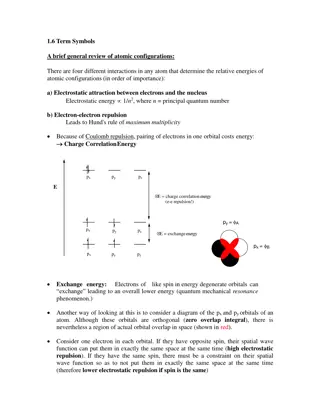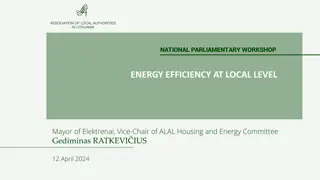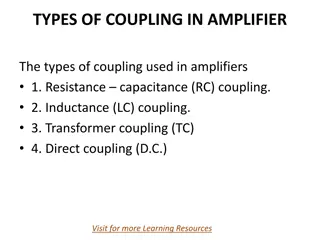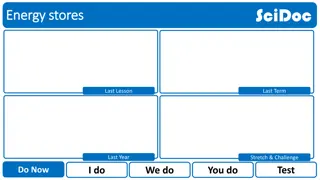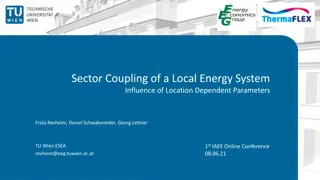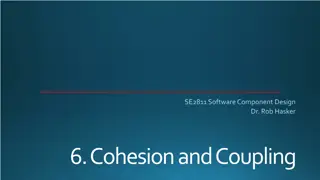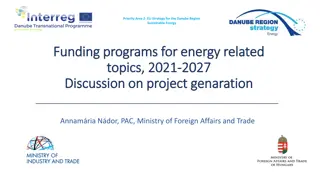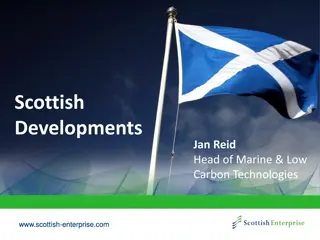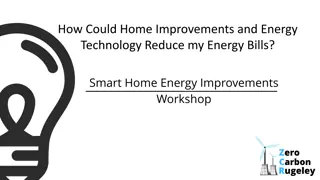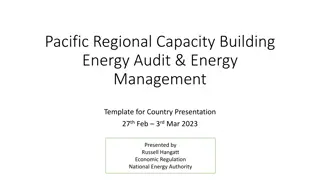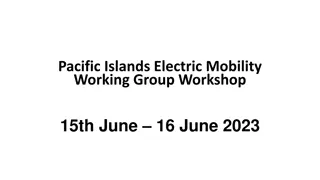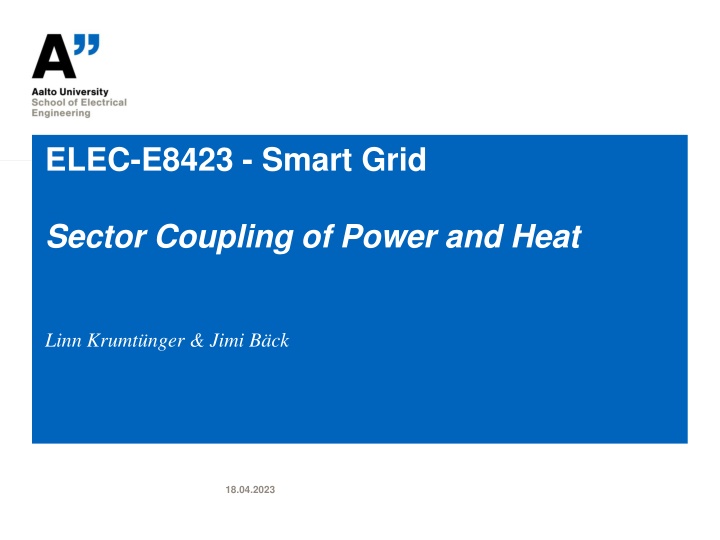
Sector Coupling for Sustainable Energy Systems
Combining electricity and heat for sustainable energy systems offers numerous benefits, including decarbonizing the heating sector, utilizing renewable electricity, providing balancing services to the power sector, and reducing costs for a transition to decarbonized energy. Various technologies like Combined Heat and Power (CHP) plants, Thermal Energy Storages (TES), and Heat Pumps play a crucial role in sector coupling. Real-world examples, such as the Copenhagen district heating system, showcase the potential of sector coupling in reducing carbon emissions. However, there are challenges to overcome, such as technical challenges in integrating different energy systems and managing peak electricity demand resulting from heat pump implementation.
Download Presentation

Please find below an Image/Link to download the presentation.
The content on the website is provided AS IS for your information and personal use only. It may not be sold, licensed, or shared on other websites without obtaining consent from the author. If you encounter any issues during the download, it is possible that the publisher has removed the file from their server.
You are allowed to download the files provided on this website for personal or commercial use, subject to the condition that they are used lawfully. All files are the property of their respective owners.
The content on the website is provided AS IS for your information and personal use only. It may not be sold, licensed, or shared on other websites without obtaining consent from the author.
E N D
Presentation Transcript
ELEC-E8423 - Smart Grid Sector Coupling of Power and Heat Linn Krumt nger & Jimi B ck 18.04.2023
Introduction Combining the use of electricity and heat for a sustainable energy system 18.04.2023 Page 2
Benefits Can contribute to the decarbonization of the heating sector Utilization of renewable electricity to replacement of fossil fuels in the heating sector Provide balancing services to the power sector Decreases the need for VRE curtailment during peak production which increases their revenue Reduce the costs for the transition to a decarbonized energy system Decreases the need for expensive peak power plants and electric storage 18.04.2023 Page 3
Technologies for Sector Coupling Combined Heat and Power (CHP) Plants generate electricity and heat from a single energy source The electricity can be used to power nearby homes, while the heat can be used for district heating and industrial processes nearby Thermal Energy Storages (TES) Allows excess heat to be stored and used later Can help to balance the supply and demand of heat in a district heating Reduces the need for backup boilers or other sources of heat Heat Pumps Uses electricity and a refrigerant to absorb heat from air, geothermal heat, or ground water Can help to increase the efficiency of the system and reduce the need for fossil fuels 18.04.2023 Page 4
Examples of Sector Coupling Projects The Copenhagen district heating system Supplying heat for approximately 98% of the city buildings Uses a combination of waste heat from electricity production, biomass, and geothermal energy Reduces the city's carbon emissions by approximately 1,2 million tons per year 18.04.2023 Page 5
Challenges to Sector Coupling Technical Challenges: Integrating various energy systems may require modifications to grid infrastructure, and managing and optimizing a complex system requires advanced tools and algorithms. Full electrification of the heating sector may require upgrades to transmission and distribution networks to manage increased demand and to ensure grid stability. Peak electricity demand: Large-scale implementation of heat pumps for sector coupling can lead to significant increases in peak electricity demand, which can create challenges for grid management. One way to mitigate peak electricity demand is through flexible operation of heat pumps and storage systems, which can help balance electricity supply and demand. COP of heat pumps: The coefficient of performance (COP) of a heat pump decreases as the source temperature decreases and the output temperature increases, which can make it less efficient to use heat pumps for sector coupling. Existing district heating networks or domestic hot water supplies may have minimum output temperature restrictions that prevent the use of low-temperature heat sources such as heat pumps. 18.04.2023 Page 6
Policy and Regulatory Framework Renewable energy targets: Some governments and regulatory bodies have set renewable energy targets as part of their climate change mitigation strategies. These targets can drive investment in clean energy technologies and promote sector coupling Incentives for clean energy: Policies and regulations can provide financial incentives for the use of clean energy sources in sector coupling, such as subsidies for renewable energy sources or tax credits for clean energy investments. These incentives can encourage investment in clean technologies and help drive the transition towards a low-carbon energy system. Fossil fuel and emission allowance prices: Low prices of fossil fuels and emission allowances may discourage investment in clean technologies for sector coupling. Higher fossil fuel and emission allowance prices could encourage investment in clean technologies for sector coupling, speeding up the transition to a low-carbon energy system. 18.04.2023 Page 7
Future of Sector Coupling The development of new technologies, such as advanced energy storage systems, smart grid technologies, and carbon capture and utilization technologies, could enable more efficient and effective sector coupling. The electrification of transport and heating sectors could further increase the demand for sector coupling, as these sectors represent a significant Sector coupling is expected to play an increasingly important role in portion of energy consumption. the transition to a low-carbon energy system, as it can help to integrate renewable energy sources and improve energy efficiency. 18.04.2023 Page 8
Conclusions Sector coupling of power and heat is a key strategy for achieving decarbonization goals, as it enables the integration of renewable energy sources into heating systems. This approach involves utilizing excess renewable electricity to produce heat through technologies such as heat pumps, which can be used in buildings, industry, and transportation. Sector coupling of power and heat has the potential to create new business models and market opportunities, as well as provide greater energy security by reducing reliance on fossil fuels. 18.04.2023 Page 9
Source material used Slide 2: Jasmine Remsebner, Reinhard Haas, Amela Ajanovic, Martin Wietschel (2021), The sector coupling concept: A critical review Slide 3: Luc Van Nuffel, Jo o Gorenstein Dedecca, Tycho Smit, Koen Rademaekers (2018) Sector coupling: how can it be enhanced in the EU to foster grid stability and decarbonise? Slide 5: Bjarne Bach, Jesper Werling, Torben Ommen, Marie M nster, Juan M. Morales, Brian Elmegaard (2016), Integration of large- scale heat pumps in the district heating systems of Greater Copenhagen, https://www.sciencedirect.com/science/article/pii/S0360544216304352 Slide 8: https://eu.boell.org/en/2018/04/24/linking-sectors-power-transport-heat-united 18.04.2023 Page 10


